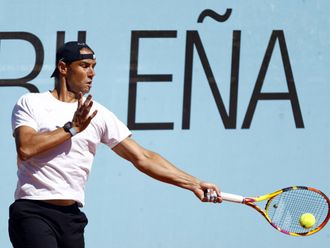Chicago: Tennis star Serena Williams’ plan to return to competition in 2018 will depend on how quickly her body recovers from giving birth this fall and how hard she trains through her pregnancy, said researchers who study pregnancy in high-performing athletes.
Williams, 35, on Wednesday confirmed her pregnancy through a spokeswoman, after posting a picture of herself in a yellow bathing suit on Snapchat social media with the caption ‘20 weeks.’
The spokeswoman, Kelly Bush Novak, told Reuters that Williams “is definitely not able to play in 2017 and she looks forward to returning in 2018.”
Williams turns 36 in September this year, on the older side for a top level professional player.
It would be perfectly safe for Williams to continue with rigorous training throughout pregnancy, but how quickly she would return to tournament tennis was uncertain, the researchers said.
Williams, who is 5 feet 9 inches (1.75 metres) and weighed 70kg, according to her tennis association profile, won a 23rd Grand Slam tournament title at the Australian Open in January. She would have been around two months pregnant at the time.
One woman athlete who made a strong comeback after childbirth was English runner Paula Radcliffe. She won the New York marathon in November 2007 six weeks before turning 34 and 10 months after having a child.
Extreme exercise and training during pregnancy remains safe and can contribute to a swift return to pre-pregnancy performance levels provided the delivery goes smoothly, according to a survey of scientific literature by experts on behalf of the International Olympic Committee.
“I’ve known women who are back to running fast 5Ks in a month because they ran probably up until 36 weeks without much problem,” said James Pivarnik, a kinesiology professor at Michigan State University.
Commentators on the Tennis Channel on Wednesday, including former star Tracy Austin, noted that other mothers have come back into the sport.
“She’s already done so much, does she need more?” Austin asked. “We’ve seen a lot of great great champions come back after having a child and it really comes down to her motivation.” Predicting how long it will take Williams to recover from a pregnancy depends on several factors, including whether she had an easy or complicated delivery, whether she breastfeeds, and whether her baby sleeps through the night or keeps her up for feedings every few hours.
“Physically, if she has a normal, uneventful birth, the baby is a doll and she is not nursing, she could recover back to normal in about 4 to 6 weeks,” said Dr Bruce Young, Silverman professor of obstetrics and gynaecology at New York University Langone Medical Centre.
But all of those variables have to line up. “As much as we would like to be able to predict this stuff, the nature of pregnancy is it’s going to be different for everyone,” said Lauren Stretcher, clinical associate professor of obstetrics and gynaecology at Northwestern University Feinberg School of Medicine in Chicago.
Williams has not played since January, citing a knee injury.
A number of players stand to benefit from Williams’ absence for the remainder of the year, including German Angelique Kerber who last year unseated the American from the top of the world rankings.
Victoria Azarenka of Belarus was one of the game’s top threats when she left last year to have her first child and the 27-year-old will have one of her main obstacles removed when she returns to competition later in 2017.
Five-times Grand Slam winner Maria Sharapova, who returns to competition next week after a 15-month doping ban, could also benefit if she rediscovers her top form. She has just two wins in 21 head-to-head meetings with rival Williams.












